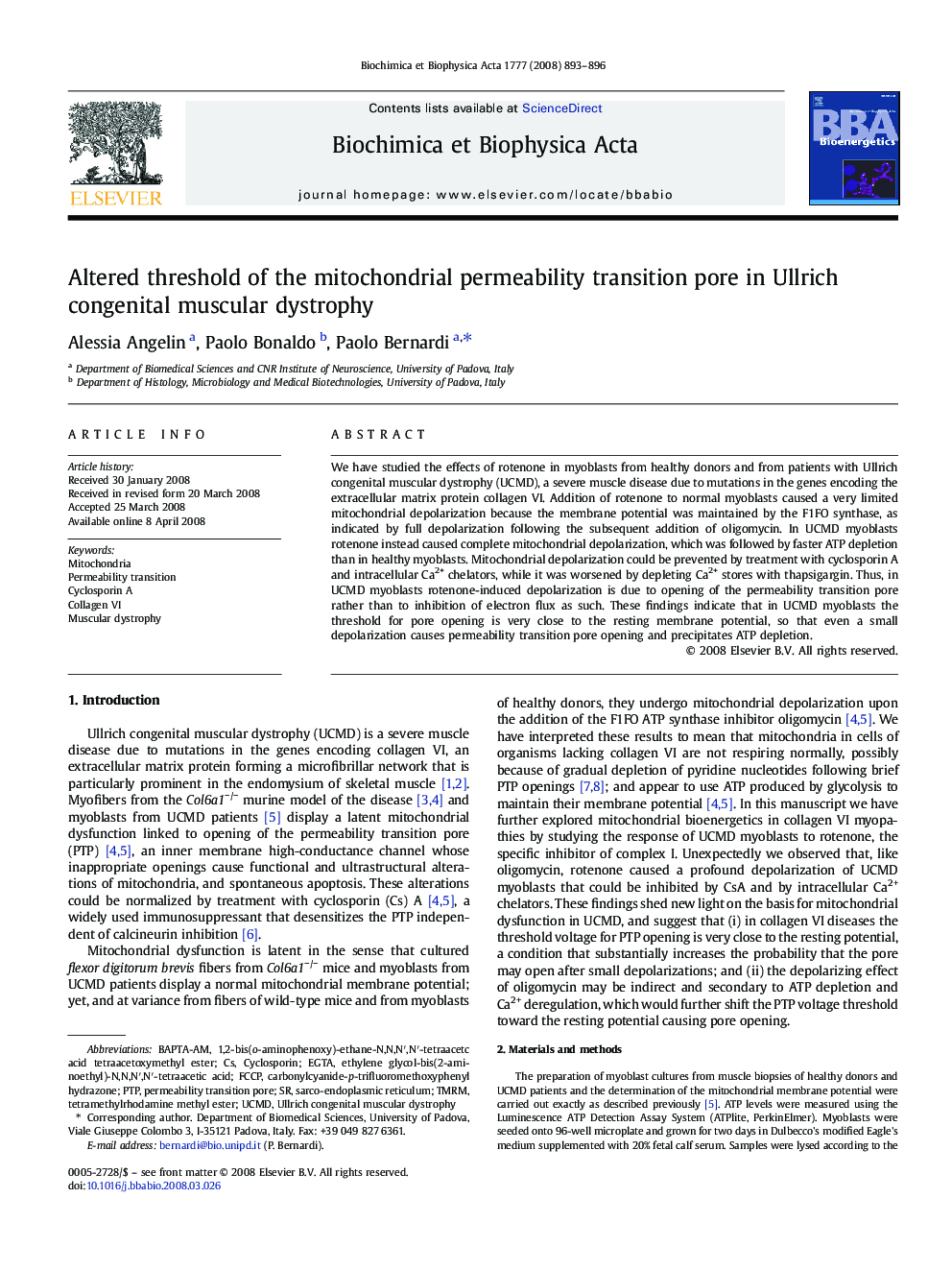| Article ID | Journal | Published Year | Pages | File Type |
|---|---|---|---|---|
| 8299193 | Biochimica et Biophysica Acta (BBA) - Bioenergetics | 2008 | 4 Pages |
Abstract
We have studied the effects of rotenone in myoblasts from healthy donors and from patients with Ullrich congenital muscular dystrophy (UCMD), a severe muscle disease due to mutations in the genes encoding the extracellular matrix protein collagen VI. Addition of rotenone to normal myoblasts caused a very limited mitochondrial depolarization because the membrane potential was maintained by the F1FO synthase, as indicated by full depolarization following the subsequent addition of oligomycin. In UCMD myoblasts rotenone instead caused complete mitochondrial depolarization, which was followed by faster ATP depletion than in healthy myoblasts. Mitochondrial depolarization could be prevented by treatment with cyclosporin A and intracellular Ca2+ chelators, while it was worsened by depleting Ca2+ stores with thapsigargin. Thus, in UCMD myoblasts rotenone-induced depolarization is due to opening of the permeability transition pore rather than to inhibition of electron flux as such. These findings indicate that in UCMD myoblasts the threshold for pore opening is very close to the resting membrane potential, so that even a small depolarization causes permeability transition pore opening and precipitates ATP depletion.
Keywords
EGTAethylene glycol-bis(2-aminoethyl)-N,N,N′,N′-tetraacetic acidPTPFCCPUCMDTMRMPermeability transition porePermeability transitionBAPTA-AMUllrich congenital muscular dystrophyMuscular dystrophyCyclosporincyclosporin Atetramethylrhodamine methyl esterMitochondriacarbonylcyanide-p-trifluoromethoxyphenyl hydrazoneCollagen VI
Related Topics
Life Sciences
Agricultural and Biological Sciences
Plant Science
Authors
Alessia Angelin, Paolo Bonaldo, Paolo Bernardi,
